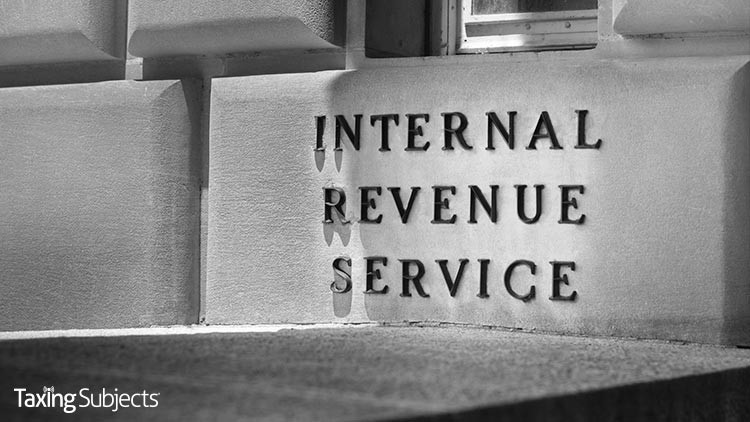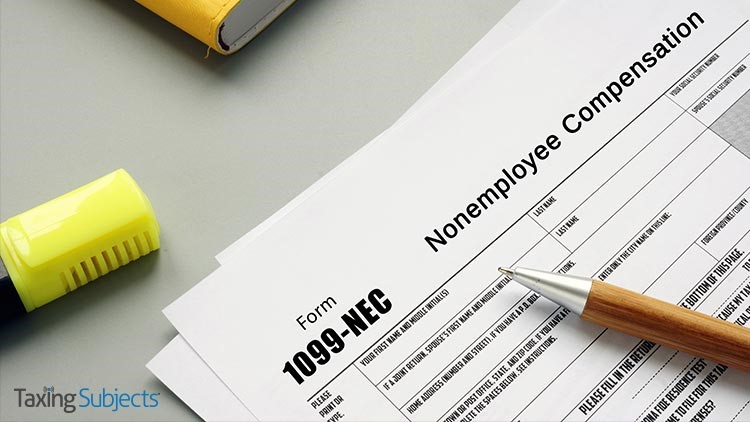by | Jun 29, 2021 | Tax Tips and News
Taxpayers who aren’t required to file a federal income tax return don’t need to file to get advance payments of the Child Tax Credit. They will, however, have to register with the IRS if they haven’t filed a return lately.
Registering through the IRS Non-Filer Sign-up Tool is an easy way for these taxpayers to provide the information the IRS needs to calculate and send out the advance CTC payments. The information, such as name, address and Social Security numbers, provides the IRS with the basic data to get the monthly credit payments set up.
The targeted taxpayers and families have little or no income, and include the homeless. Generally, they just don’t have enough income to file a return. And that’s where the IRS’ tool comes in.
The Non-Filer Sign-up Tool is for people who didn’t file a tax return for either 2019 or 2020 and have not used the tool previously to claim Economic Impact Payments (EIPs). The free tool provides individuals with a way to relay to the IRS the required information on themselves, their children and other dependents as well as their direct deposit information so the advance credit payments can go straight into their bank account.
Eligible families who already filed a 2019 or 2020 return—or expect to file one—should not use the Non-Filer Sign-up Tool. Once their return is processed, the IRS will automatically check their eligibility and calculate the credit. The advance payments will then be issued.
Those who want to claim other tax benefits, such as the earned income tax credit, also should not use the Non-Filer Sign-up Tool. They should instead simply file a regular tax return.
The Advance Child Tax Credit
The American Rescue Plan Act, which became law in March of this year, made the CTC possible in its present form. The legislation expanded the credit and made it payable in advance installments.
The Child Tax Credit is normally calculated using the taxpayer’s 2020 return. If the 2020 tax return hasn’t been filed or is still being processed, the 2019 return is used to calculate the initial payment. In lieu of a 2019 return, the information that available in 2020 and entered with the Non-Filer Tool can be used.
Advance payments will be up to $300 per month per child under age 6, and up to $250 per month per child aged 6 – 17.
If banking information has been provided by the taxpayer, the IRS will send the advance payments by direct deposit. Otherwise, the advance payments will be via paper check in the mail. Payment dates are: July 15, August 13, September 15, October 15, November 15, and December 15.
For more information and other helpful resources, see Advance Child Tax Credit Payments in 2012 on IRS.gov, and FAQs on the 2021 Child Tax Credit and Advance Child Tax Credit Payments.
Source: People who don’t have to file taxes may need to register for monthly advance child tax credit payments.
– Story provided by TaxingSubjects.com
by | Jun 26, 2021 | Tax Tips and News
The latest publication from the Internal Revenue Service is getting all the sendup worthy of a new best-seller. The Data Book for 2020 recounts the agency’s effort to deal with tax season during the time of the coronavirus.
Admittedly, the numbers supply a heroic read.
The Data Book spans the 2020 fiscal year, running from Oct. 1, 2019 to Sept. 30, 2020. Among other things, the Data Book recounts how the IRS responded to the COVID-19 pandemic, by developing new technology and equipment that allowed agency employees—thousands of employees—to work from home. This, in turn, allowed the IRS to continue processing tax returns and provide telephone assistance to taxpayers.
IRS Commissioner Chuck Rettig is understandably proud of his agency and its people for their hard work and teamwork during the pandemic.
“This year’s Data Book describes the important work that IRS employees accomplish on behalf of the public,” said Rettig. “The IRS accounts for approximately 96% of the funding that supports the federal government’s operations, while proudly serving and interacting with more Americans than any other public or private organization.”
“The 2020 Data Book also details the extraordinary measures the IRS took to protect the health and safety of taxpayers and IRS employees during the COVID-19 pandemic while implementing critical economic relief legislation—the largest economic rescue packages in US history,” Rettig added.
The 2020 Data Book also describes how the IRS eased the burden on taxpayers during the pandemic by extending the federal tax deadline to file and to pay from April 15 to July 15, 2020.
If all this sounds like it’s not enough to keep an entire federal agency busy, the IRS also debuted its People First Initiative during this time. The new program eased payment guidelines, delayed compliance actions, and suspended most collection enforcement actions, such as liens and levies, from April 15 to July 15, 2020.
The IRS giveth
To help combat the huge downturn to the economy the pandemic left in its wake, Congress passed the Coronavirus Aid, Relief and Economic Security (CARES) Act. This new law sent nearly 162 million Economic Impact Payments (EIPs) directly to American taxpayers in the first round alone. The IRS played a leading role, sending out the actual payments to taxpayers.
A second round of 146.5 million EIPs was sent out by the IRS in 2020, bringing the calendar year’s direct-payment relief total to nearly $413 billion (yet another round of relief payments would go out in 2021).
While processing and sending out relief payments, the IRS still had to continue to handle incoming federal income tax returns, processing over 240 million returns and collecting almost $3.5 trillion in federal taxes over the fiscal year.
The IRS Data Book for 2020 includes some 33 tables that describe all the agency’s work during the fiscal year, from the returns processed to the revenue collected, audits and collection activities, as well as budget and personnel figures.
While Commissioner Rettig encourages people to have a look at the 2020 Data Book, he stresses that the IRS story goes beyond statistics, charts and tables.
“IRS employees care, and our agency is made up of people who give back to their communities and help one another. Our employees provide significant support for those devastated by hurricanes, wildfires, and other natural disasters, and across the nation, they did amazing work in their communities to help those impacted by COVID-19,” Rettig said.
Source: IRS releases Data Book for fiscal 2020 describing agency’s activities during pandemic
– Story provided by TaxingSubjects.com
by | Jun 24, 2021 | Tax Tips and News
The Internal Revenue Service has unveiled a pair of new tools to help families manage and monitor advance monthly payments of the Child Tax Credit, made possible by the American Rescue Plan.
The new tools join the Non-Filer Sign-up Tool that helps families who aren’t normally required to file an income tax return to file a return and register for the Child Tax Credit.
The Child Tax Credit Eligibility Assistant allows families to determine if they qualify for the advance credit just by answering some questions.
The Child Tax Credit Update Portal can verify taxpayers are eligible for the advance CTC payments. This tool can also be used to unenroll taxpayers from the advance payments if they choose, so they can get a lump sum when they file a tax return next year.
All families need to access the password-protected Portal is internet access and a computer or smartphone.
The Child Tax Credit Eligibility Assistant and the Child Tax Credit Update Portal are both available now on IRS.gov.
“IRS employees continue to work hard to help people receive this important credit,” IRS Commissioner Chuck Rettig said. “The Update Portal is a key piece among the three new tools now available on IRS.gov to help families understand, register for and monitor these payments. We will be working across the nation with partner groups to share information and help eligible people receive the advance payments.”
More features are on the way
A number of updates and upgrades are scheduled for the Child Tax Credit Update Portal by the IRS. Families will soon be able to use the portal to check the status of their payments. Later this month, the IRS expects taxpayers to be able to update bank account information for advance CTC payments. Next month, an upgrade is planned that will let taxpayers change their mailing address.
In late summer and fall, taxpayers should be able to use the Portal to update their family status and changes in income. More on these improvements can be found on the tool’s FAQs on IRS.gov.
Ahead of all the upgrades, though, the initial version of the Portal and its unenrollment feature are worthy of the spotlight.
Some families might prefer to wait until the end of the year and get the full credit amount as a tax refund from their 2021 return, instead of getting the advance payments. The Portal gives these taxpayers an easy way to opt out of the monthly CTC payments.
Unenrollment might also help those families that no longer qualify for the Child Tax Credit – or think they won’t qualify when they file a 2021 tax return.
There are three main ways this could happen:
- Their income in 2021 is too high to qualify them for the credit.
- Someone else (an ex-spouse or another family member, for example) qualifies to claim their child or children as dependents in 2021.
- Their main home was outside of the United States for more than half of 2021.
ID verification required for portal access
Users who want to access the Child Tax Credit Portal first have to verify their identity. Those without an existing IRS account will have to verify their identity with a kind of photo identification that uses ID.me, a trusted third-party vendor for the IRS. This important security check will keep taxpayers’ accounts secure and shielded from identity theft.
Users who have an existing IRS username or an ID.me account can use those credentials to sign in, without creating a new account.
Taxpayers without internet access or who otherwise can’t use the online tool to unenroll should contact the IRS using the telephone number included in their IRS outreach letter.
Check eligibility first
The first stop for taxpayers and their families should be the Child Tax Credit Eligibility Assistant. Here, families can see if they are qualified for the Child Tax Credit and its advance payments.
This simple tool uses a series of questions to determine if the taxpayer qualifies.
It should be noted that this is merely an eligibility tool, not a site to register, so no personal information is requested or used. But it is critical in determining whether the taxpayer should go on and either file a tax return or register using the Non-Filer Sign-up Tool.
For details on the provisions of the Advance Child Tax Credit, check out our Taxing Subjects blog on the CTC or visit the IRS web page Advance Child Tax Credit Payments in 2021.
The IRS page has direct links to all three tools mentioned here, a list of frequently asked questions and other resources.
Sources: IRS announces two new online tools to help families manage Child Tax Credit payments.
– Story provided by TaxingSubjects.com
by | Jun 23, 2021 | Tax Tips and News
Most times, businesses pay their employees for the work they do, and set aside a portion of those wages to in turn, pay Uncle Sam. But what if the business has to pay someone who isn’t technically an employee?
Enter nonemployee compensation.
Form 1099-NEC, Nonemployee Compensation, is used to help collect taxes from those who get paid for services to a company or nonprofit organization while not being a full employee.
The law demands that anyone who earns $600 or more in nonemployee compensation in a year has to report the payments using Form 1099-NEC.
The deadline for filing Form 1099-NEC is Jan.31. For 2021 returns, there is no automatic 30-day extension of time to file. However, hardship cases may be able to qualify for an extension.
The IRS says a Form 1099-NEC has to be issued for each person that a business or nonprofit group paid for:
- Services performed by someone who is not their employee (including parts and materials);
- Cash payments for fish (or other aquatic life) they purchased from anyone engaged in the trade or business of catching fish; or
- Payments to an attorney.
Some specific kinds of payments don’t have to be listed on the Form 1099-NEC. For a full list, see the Instructions for Forms 1099-MISC and 1099-NEC on the IRS website.
Backup Withholding
If a person due nonemployee compensation hasn’t supplied the payer with a Taxpayer Identification Number (TIN), or if the IRS says the payee’s TIN doesn’t match their records, backup withholding may be necessary.
A valid TIN can be a Social Security number; employer identification, individual taxpayer identification or adoption taxpayer identification.
Backup withholding may apply to most kinds of payments that are reported on Form W-2G and the various Forms 1099. It is defined as the taxpayer’s requirement to withhold a certain percentage of tax from income not otherwise subject to withholding.
The person or business paying the taxpayer doesn’t generally withhold taxes from some kind of payments, yet there are cases when the payer is required to withhold a percentage of tax due the IRS.
At present, the current backup withholding tax rate is 24%.
For more information see the Instructions for Forms 1099-MISC and 1099-NEC; the General Instructions for Certain Information Returns; or Publication 15, Employer’s Tax Guide (Circular E).
Sources: Businesses must report nonemployee compensation and backup withholding; Instructions for Forms 1099-MISC and 1099-NEC.
– Story provided by TaxingSubjects.com
by | Jun 22, 2021 | Tax Tips and News
It’s said that the early bird gets the worm. Some early-bird taxpayers could see a real benefit from their promptness to file their taxes, and it’s worth more than mere worms.
The legislative package known as the American Rescue Plan of 2021 was passed into law in March of this year. Normally, unemployment benefits are taxable.
The American Rescue Plan, or ARP, excluded up to $10,200 in unemployment compensation from each taxpayer’s taxable income. But some people filed their returns and paid taxes on the full amount of their unemployment benefits before the ARP became law, so the IRS is working to send those taxpayers a refund.
The Internal Revenue Service says it’s refunding those surplus employment taxes paid, in order to spare early-bird filers the need to file an amended return. Not all early birds, however, will get a refund.
Some taxpayers will see their overpayment applied to taxes due or some other debts. For other taxpayers, there may not be a change at all.
While the ARP exclusion takes up to $10,200 out of a taxpayer’s taxable income, that’s not the amount of the refund taxpayers will get.
Other American Rescue Plan adjustments
A decrease in a taxpayer’s taxable income could also affect their eligibility and benefit from the earned income tax credit (EITC), the premium tax credit or the recovery rebate credit. The IRS is making corrections for these credits as well.
The agency says it can adjust the returns of single taxpayers with no children but who are eligible for EITC. Taxpayers who claimed the EITC and have qualifying children identified can also have their returns adjusted.
However, taxpayers with qualifying children and who become eligible for EITC after the exclusion is calculated may have to file an amended return to claim new benefits.
Those taxpayers who qualify for an adjustment on their return should get a letter from the IRS within some 30 days that explains just what kind of adjustment was made to their return and the amount of the adjustment.
An adjustment could come in the form of a refund, payment of an IRS tax debt or a payment offset for other authorized debts.
An offset occurs when the amount of the refund would effectively wipe out an amount the taxpayer owes, and no money changes hands. Offsets can be used to erase include past-due federal tax, state income tax, state unemployment compensation debts, child support, spousal support or certain federal non-tax debts, such as student loans.
The IRS says, in most cases, taxpayers don’t have to do anything when an adjustment is needed. But the IRS website specifies there are certain circumstances where an adjustment makes filing an amended return beneficial:
“If as a result of the excluded unemployment compensation you now qualify for deductions or credits not claimed on your original return, you should file an amended return. For example, if you did not claim the Earned Income Tax Credit (EITC) on your originally filed return because your AGI was too high, but the exclusion allowed for unemployment compensation now reduces your AGI, you should file an amended return to claim the credit if now eligible.”
For more information, see Tax Treatment of Unemployment Compensation, or the Unemployment Compensation Exclusion FAQs on the IRS website, IRS.gov.
Sources: Taxpayers may receive a refund for taxes paid on 2020 unemployment compensation; Tax Treatment of Unemployment Compensation.
– Story provided by TaxingSubjects.com





